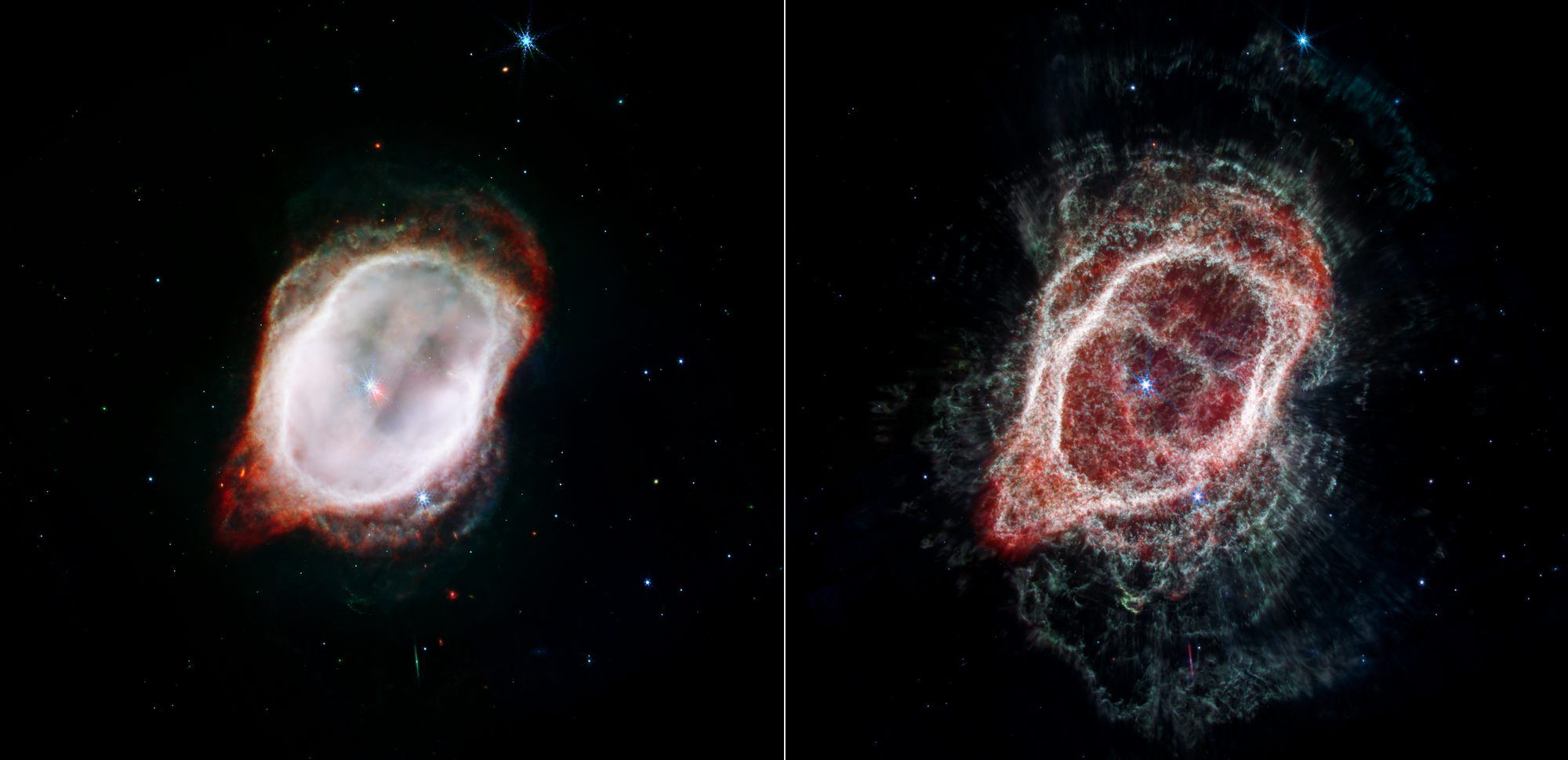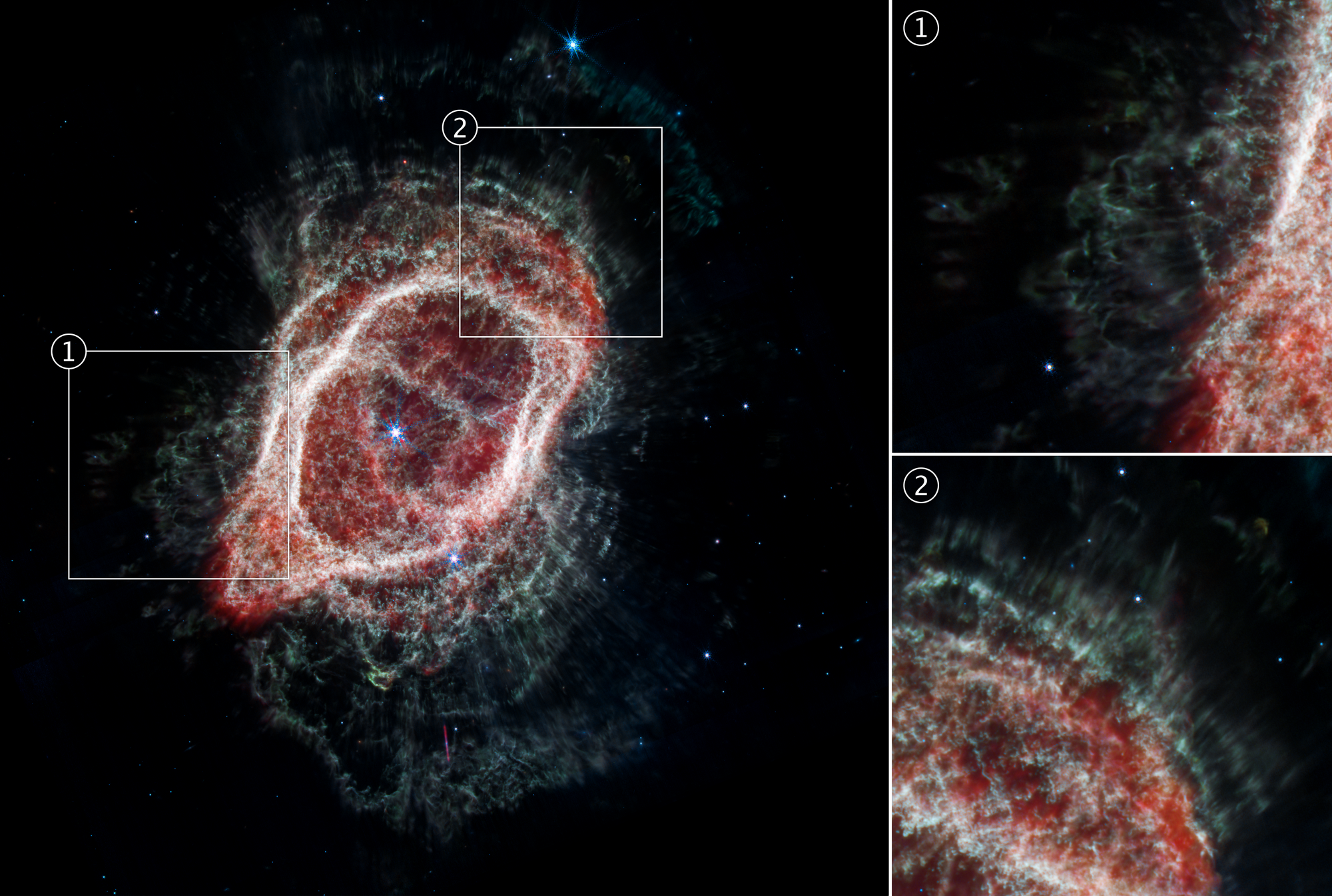There are possibly four or maybe even five stars at the heart of the Southern Ring Nebula, NGC 3132. An international team of almost 70 astronomers, led by Orsola De Marco of Macquarie University in Sydney, Australia, analyzed 10 James Webb Space Telescope (JWST) detailed observations of this nebula, in which two stars can be seen, and modeled how the central star could produce the observed intricate shapes.
The team, which includes Dr. Jesús Toalá from the Institute of Radioastronomy and Astrophysics (IRyA), at UNAM Campus Morelia, found that at least two other unseen companion stars are needed to reproduce what we see in the images. Using the other star visible in the space telescope images, the team was also able to measure the mass of the central star before it produced the nebula, for the very first time.
The Southern Ring Nebula is a planetary nebula, formed when a star similar or somewhat heavier than the Sun sheds its outer layers into space, exposing its hot, compact nucleus, a white dwarf, which then illuminates the gas and dust expelled before. The amount of gas and dust in the nebula depends on how massive the star was before ejecting that material.
The team calculated that the central star in NGC 3132 was nearly three times the mass of the Sun before it ejected its layers of gas and dust to form the nebula. Now it is only about 60% the mass of the Sun. Knowing the initial mass is a critical piece of evidence that helped the team reconstruct the scene and model how the shapes in this nebula may have been produced.
The central star appears reddish in the JWST images, which indicates the presence of a dust disk around it. The team constructed models that show that the material in this disk was probably ejected by two close companion stars, but in very specific directions, which then produced the two “bumps” in the nebula we see today. These stars are now hidden within the bright emission of the nebula.
One of them was so close that it may have merged with the central star when it expanded, right before shedding its outer layers. “With Webb, it’s like we were handed a microscope to examine the universe,” De Marco said. “There is so much detail in its images. We approached our analysis much like forensic scientists to rebuild the scene.” A possible third companion star, closely interacting with the central star, may be responsible for the complex shapes of the Southern Ring Nebula.
The bright blue-white star that can be seen in JWST’s images was almost like an “innocent bystander” to the scene, as it did not interact with the central system to produce the nebula. Still, it was central to this study, because its steady, slow orbit around the central star helped measure its mass with great precision.
JWST images
These JWST images show near- and mid-infrared light from the Southern Ring Nebula. The left image highlights the very hot gas that surrounds the central stars. This hot gas is banded by a sharp ring of cooler gas, which appears in both images. The right image traces the star’s scattered outflows that have reached farther into space. Most of the molecular gas that lies outside the band of cooler gas is also cold. It is also far clumpier, consisting of dense knots of molecular gas that form a halo around the central stars. The dimmer star that created the planetary nebula appears as a faint red star next to the blue star.

Credits: NASA, ESA, CSA, STScI, Orsola De Marco (Macquarie University), Joseph DePasquale (STScI).
Details from the image in the right can be seen as inset boxes in the image below. These show different shapes of the ejected material that formed the nebula, which the team indicates as evidence of the interacting companion stars at different times in the evolution of the central star.

Credits: NASA, ESA, CSA, STScI, Orsola De Marco (Macquarie University), Joseph DePasquale (STScI).
Dr. Jesús Toalá’s career
Dr. Jesús Toalá obtained his Bachelor in Physics degree from the Autonomous University of Sinaloa, Mexico, and his PhD in astrophysics at the Instituto de Astrofísica de Andalucía (IAA-CSIC) in Granada, Spain. He was a postdoctoral researcher at the IAA-CSIC and at the
Institute of Astronomy & Astrophysics, Academia Sinica (ASIAA) in Taiwan. He has been a researcher at IRyA UNAM, Mexico since June 2017.
He studies the circumstellar medium around low and high-mass stars through infrared, optical and X-ray observations. He also studies the X-ray emission from superbubbles in the Large Magellanic Cloud.
In 2020 Dr. Toalá received the Marcos Moshinsky Professorship from the Institute of Physics at UNAM. He also organizes the meetings of the Evolved Stars working group at IRyA.
Scientific paper
This research article was published on December 8, 2022 in Nature Astronomy.
The messy death of a multiple star system and the resulting planetary nebula as observed by JWST
https://www.nature.com/articles/s41550-022-01845-2
About IRyA, UNAM
The Instituto de Radioastronomía y Astrofísica (IRyA), or Institute for Radioastronomy and Astrophysics is an academic unit at UNAM, Campus Morelia, Mexico. We perform high-level and high-impact research in the areas of interstellar medium, star formation, evolved stars, high energy astrophysics, Galactic dynamics and structure, extragalactic astronomy and cosmology. We contribute to the education of high-level human resources through a postgraduate program, and we have close contact with society through diverse outreach programs.
If you are interested in our Institute, visit the English version of our webpage, www.irya.unam.mx/web/en
Media contact:
Dr. René A. Ortega Minakata
Outreach and Science Communication
IRyA UNAM Campus Morelia
Text: Adapted by IRyA UNAM from the original text by Claire Blome, Space Telescope Science Institute (STScI)
STCiI press release:
https://webbtelescope.org/contents/news-releases/2022/news-2022-059




